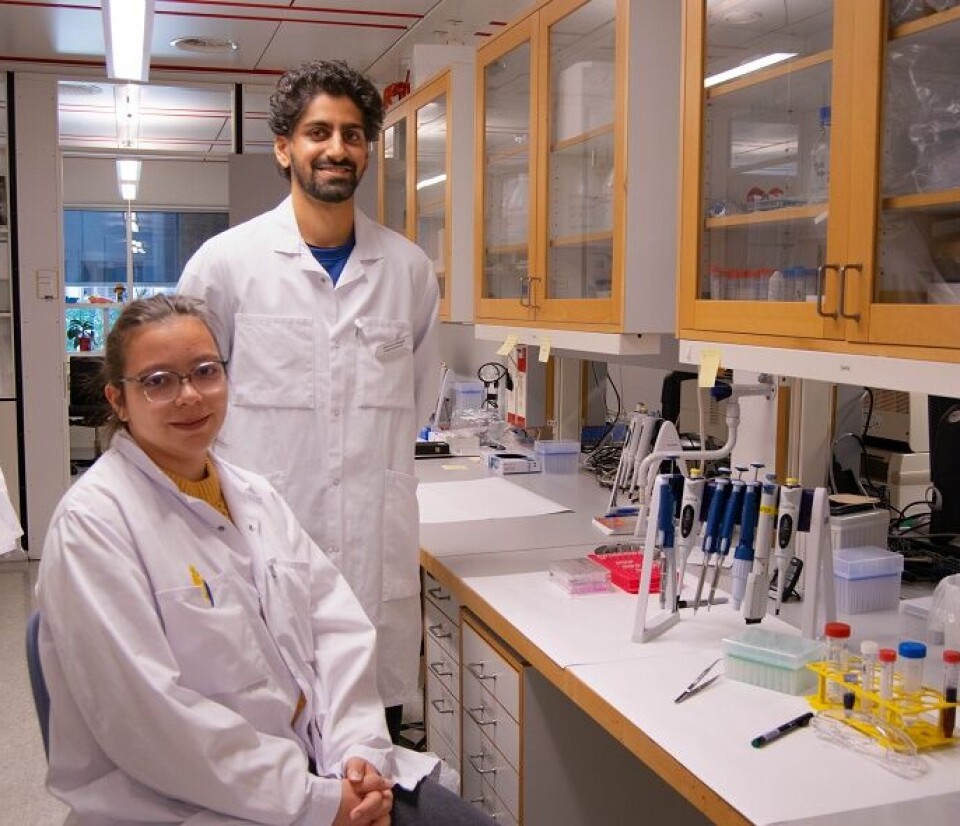THIS CONTENT IS BROUGHT TO YOU BY University of Oslo - read more

Researchers are testing a new treatment option for Burning Mouth Syndrome using capsaicin from chili peppers
The aim is to find a way to prolong the presence of capsaicin in the mouth.
Burning Mouth Syndrome (BMS) is a chronic condition characterised by a burning pain in the mouth, sometimes accompanied by numbness and changes in taste.
The symptoms of this condition closely resemble those of other neuropathic pain disorders. There has been limited research on this phenomenon in Norway, but a research project at the Faculty of Dentistry could pave the way for a new treatment method.
A perplexing condition
BMS is often considered a perplexing condition because the intensity of pain rarely corresponds to the observable symptoms of the disease.
As a result, BMS patients are at a risk of being labelled as hypochondriacs or anxious, and do not receive appropriate treatment by medical or dental health personnel.
Associate Professor Preet Bano Singh describes the criteria for diagnosing BMS as enduring pain for a minimum of four to six months, accompanied by a strong burning sensation in the mouth, which cannot be explained by a medical or dental condition.
She works at the Clinic for Smell, Taste, and Oral Pain, where many patients with chronic burning mouth pain are referred.

“Since there has been so little research on BMS, patients often feel dismissed, with their complaints being trivialised. However, by scanning the brains of patients with BMS, we found abnormalities in the part of the brain that deals with pain," Singh says.
This discovery was part of an international study and suggests that the reason for the burning feeling in the mouth could be linked to nerve issues in the brain. The findings were published in the European Journal of Neuroscience.
No effective treatment in Norway
“Before confirming that a person suffers from BMS, it is important to investigate and exclude other possible causes of the burning pain,” Singh says.
This involves evaluating whether the pain may originate from issues affecting the entire body (systemic causes) or from conditions affecting the areas around the mouth (peripheral causes). Medical and dental interventions, as well as the use of certain medications, can lead to burning mouth pain.
Currently, there are no effective treatment regimens for this patient group in Norway. Various medications are used to treat BMS, including benzodiazepines, gabapentin, tricyclic antidepressants, antipsychotics, antioxidants, and behavioural therapies.
“However, none of these treatments are optimal or particularly effective, and patients experience despair when there are no options to treat or alleviate their chronic pain,” Singh points out.

One remedy that has some effect is alpha-lipoic acid, an antioxidant. According to Singh's observations, approximately 60 per cent of her patients respond positively to this treatment. For the remaining 40 per cent, it has little or no effect.
“However, BMS can also be effectively treated with capsaicin gel, which is commonly used in other countries,” she says.
Capsaicin is a chemical compound naturally found in chili peppers.
"It acts as an 'awakener' for specific receptors in the body that transmit pain and temperature signals,” Singh explains.
Unfortunately, it is currently not possible to purchase intraoral capsaicin gel or ointment in Norway.
“Therefore, I decided to explore ways to create a substance that can effectively deliver the appropriate concentration of capsaicin to the inner lining of the mouth,” she says.
Developing a carrier for capsaicin
The research team embarked on laboratory experiments focused on the substance capsaicin, aiming to solve the challenge of keeping the active substance in its intended location.
When capsaicin is applied to the mouth, it is often washed away by saliva and quickly disappears when the tongue moves. Researchers are therefore working on finding a way to prolong the presence of capsaicin in the mouth.
“In this research project, the idea is to develop a kind of 'carrier' that can keep capsaicin in place in the mouth,” Tiainen explains.
This carrier must have sufficient stickiness to adhere to the mucous membrane.
“The goal is to develop a new method for delivering capsaicin to the mouth that provides longer duration and better effectiveness. However, before such a treatment strategy can be implemented, it must be investigated whether the new carrier is safe for the cells in the mouth,” the researchers conclude.

This content is paid for and presented by the University of Oslo
This content is created by the University of Oslo's communication staff, who use this platform to communicate science and share results from research with the public. The University of Oslo is one of more than 80 owners of ScienceNorway.no. Read more here.
More content from the University of Oslo:
-
A researcher has listened to 480 versions of Hitler's favourite music. This is what he found
-
Researcher: "AI weakens our judgement"
-
New, worrying trend among incels, according to researcher
-
Ship’s logs have shaped our understanding of the sea
-
New study: The dilemma of copyright in the Global South
-
How your lifestyle affects your risk of bowel cancer




































